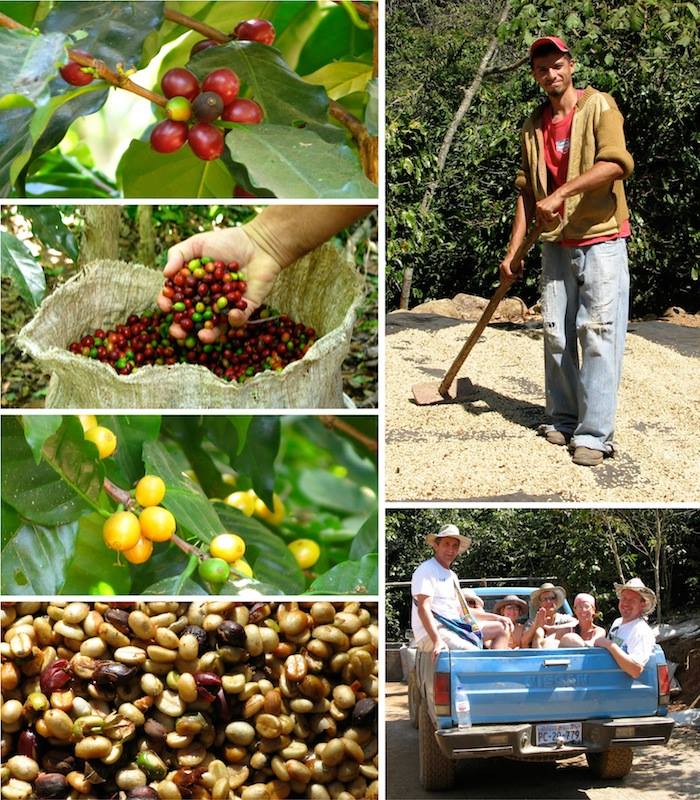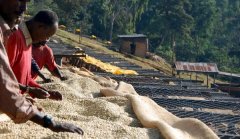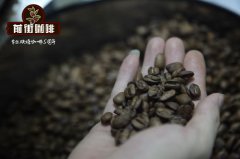Mexico, the fourth largest coffee producer in the world, has a smooth and fragrant flavor, dried tangerine, nuts, etc.
Professional coffee knowledge exchange more coffee bean information please follow the coffee workshop (Wechat official account cafe_style)

Mexican coffee
Coffee from the world's fourth largest coffee producer, slippery and fragrant, Mexico, the fourth largest coffee producer in the world, produces about 5 million bags of coffee a year. Most of its coffee is produced by nearly 100000 small farmers, and large estates that once manipulated the coffee industry are rare. The yield of Mexican coffee is about 630 kg per hectare. Then the Mexican Coffee Association (Instituto Mexicano del Caf é, or Inmecafe) took control of the coffee industry. The Coffee Association controls both coffee cultivation and the market for coffee beans that can be exported since November. The association provides farmers with minimum purchase prices, technical advice and other assistance. However, since 1991, the Coffee Association's activities have been reduced and its functions are likely to be further weakened.
Due to geographical and climatic reasons, the coffee growing area of Mexico is close to Guatemala, and the production classification belongs to the Central American type. The main producing areas are: Kolabegu, Australia Aluca states, the products are mostly washed beans produced in the highlands, with a good aromatic and sour taste, the grade is divided into three categories according to altitude: Aldura (219m-1280 m), Prima. Rabe Society (853-1006 m) Puine. Raba Society (640-762 m). Coffee beans are mainly exported to the United States. It is characterized by a smooth taste, high acidity, medium mellowness and a slightly nutty finish. Sweet, sour and bitter are neutral, moderately sour, special and elegant.
Mexico is the largest producer in Latin America, followed by Brazil and Colombia.
Mexico in third place. Mexico's coffee production was obvious after World War II.
The rise of. In addition to oil, coffee is the second largest local export
Has a great influence on Mexico's national economy. Nayarit (Nayarit)
The windward side of the coast is affected by the northeast monsoon because of abundant rainfall and fertile volcanoes
Soil, but also rich in water resources, this batch of Nayarit
Plateau Paradise Manor (Mi Cielito) Solar Coffee fruits
To refine and retain the original aroma and flavor of raw beans. Mexico, too.
One of the largest producers of organically certified coffee, due to geographical factors, most
Coffee is sold to America. The country's coffee industry began in the 19th century and was mainly planted.
It's all Arabica, and more than 2 million of Mexicans depend on coffee for a living.
75% of Mexican coffee farmers grow coffee on less than two hectares of land.
These small farmers produce about 30% of the coffee produced in the country each year, and the rest is produced by
To produce from large or high-capacity farms.
The Paradise Manor in Nayarit Plateau, Mexico, is insolated.
MX Nayarit Mi Cielito Nat.
This group of 10 coffee farmers began to work together in 2008, focusing on using sustainable methods to grow coffee to protect the environment and the quality of life of coffee farmers themselves, and even the communities in which they live. They work together to cultivate about 40 square kilometers of land in Veracruz, and they work hard to grow coffee in the hope that each variety they grow will show the most unique and attractive characteristics. in order to achieve their goal, they use solid farming methods in the planting stage, picking only the most mature coffee cherries when harvesting and using very strict criteria for raw bean processing.
Origin: Mexico
Farm: Nayarit Mi Cielito. Cooperative society
Coffee varieties: Tibica, bourbon, Katura, New World species
Altitude: 980-1140 m
Raw bean treatment: sun drying
MX Nayarit Mi Cielito Nat.
Flavor description: air-dried orange, nut, corn and toast are well balanced.
Important Notice :
前街咖啡 FrontStreet Coffee has moved to new addredd:
FrontStreet Coffee Address: 315,Donghua East Road,GuangZhou
Tel:020 38364473
- Prev

Nolandino Cooperative, Peru, washing. Its full and balanced taste is characterized by the characteristics of the producing area.
Professional coffee knowledge exchange more coffee bean information please follow the coffee workshop (Wechat official account cafe_style) Peru Nolandino Cooperative washing Peru Norandino Coop Peru Norandino Cooperative washing Peru is located in western South America, west of the Pacific Ocean, bordering with Brazil, Colombia, Bolivia several well-known South American coffee-producing countries, the Andes
- Next

Mexican Coffee-High altitude and fertile volcanic soil make beans gentle and delicate with pleasant aroma
For more information on coffee beans, please follow the coffee workshop (Wechat official account cafe_style) Mexican coffee is said to have been transplanted to Mexico from the West Indies by a Spaniard in the late 18th century. The excellent Mexican coffee has a comfortable taste, mellow taste, moderate acidity, mild and meticulous, and pleasant aroma. Mexico has 12 major production
Related
- Does Rose Summer choose Blue, Green or Red? Detailed explanation of Rose Summer Coffee plots and Classification in Panamanian Jade Manor
- What is the difference between the origin, producing area, processing plant, cooperative and manor of coffee beans?
- How fine does the espresso powder fit? how to grind the espresso?
- Sca coffee roasting degree color card coffee roasting degree 8 roasting color values what do you mean?
- The practice of lattes: how to make lattes at home
- Introduction to Indonesian Fine Coffee beans-- Java Coffee producing area of Indonesian Arabica Coffee
- How much will the flavor of light and medium roasted rose summer be expressed? What baking level is rose summer suitable for?
- Introduction to the characteristics of washing, sun-drying or wet-planing coffee commonly used in Mantenin, Indonesia
- Price characteristics of Arabica Coffee Bean Starbucks introduction to Manning Coffee Bean Taste producing area Variety Manor
- What is the authentic Yega flavor? What are the flavor characteristics of the really excellent Yejasuffi coffee beans?

